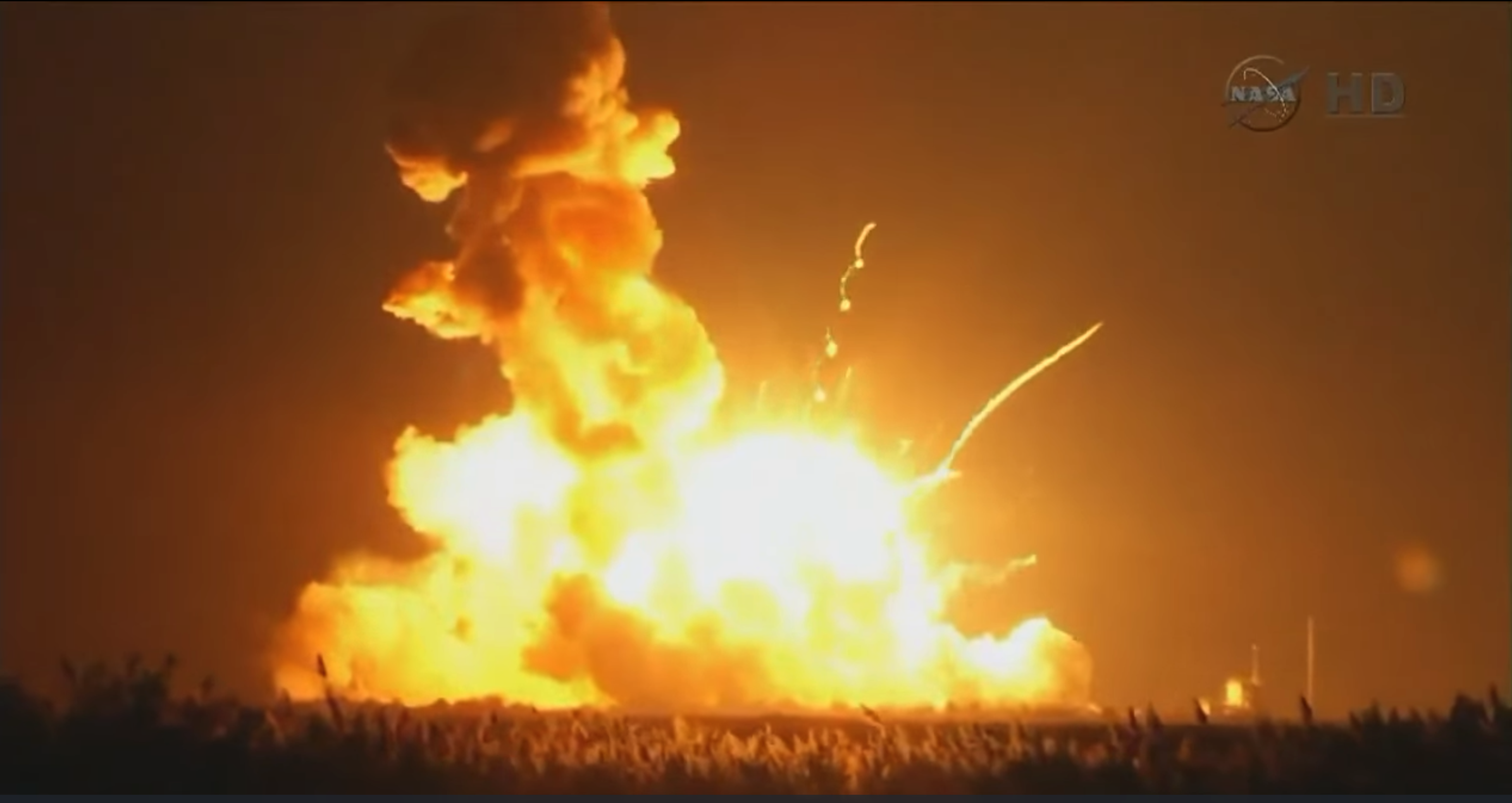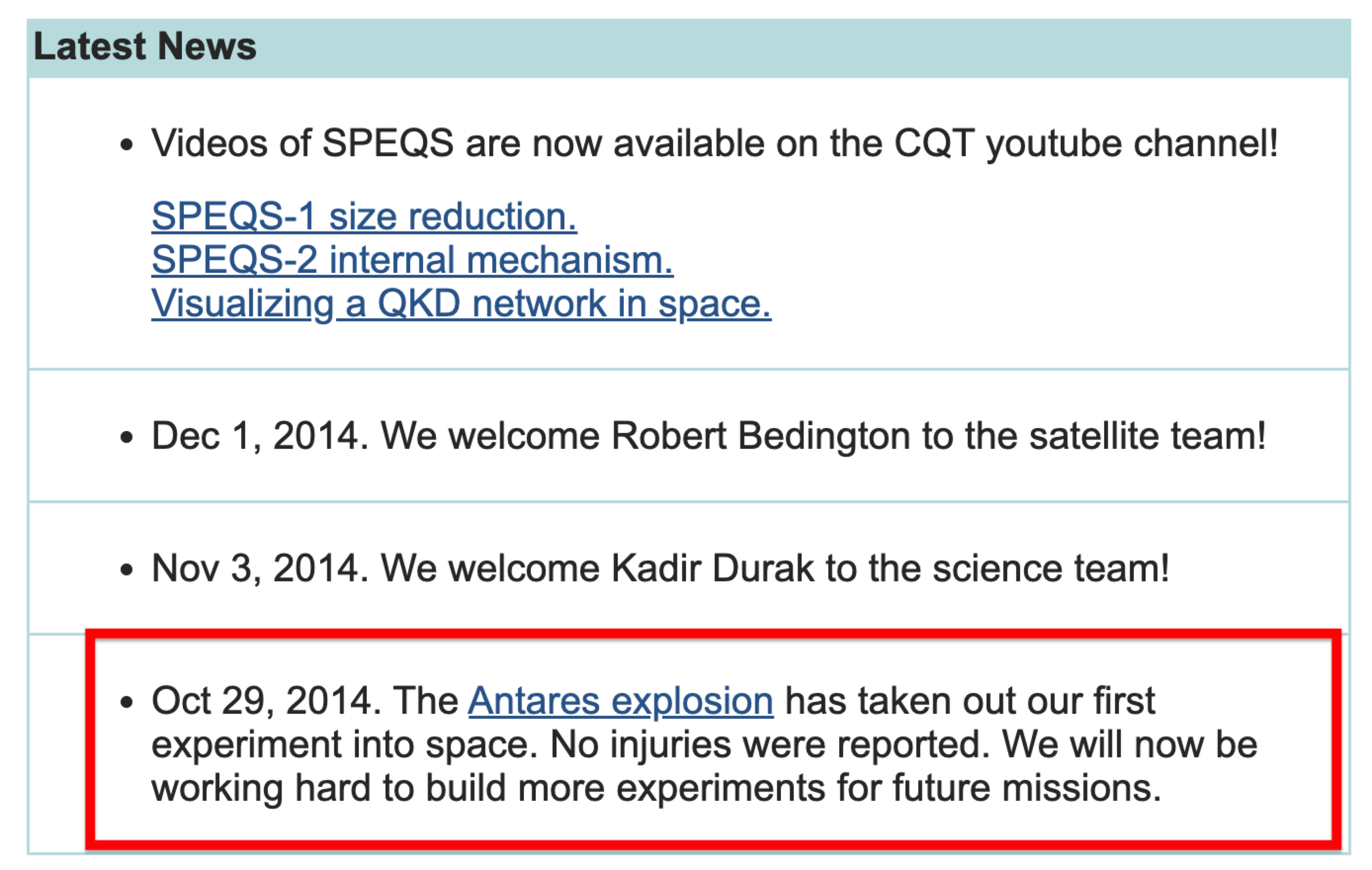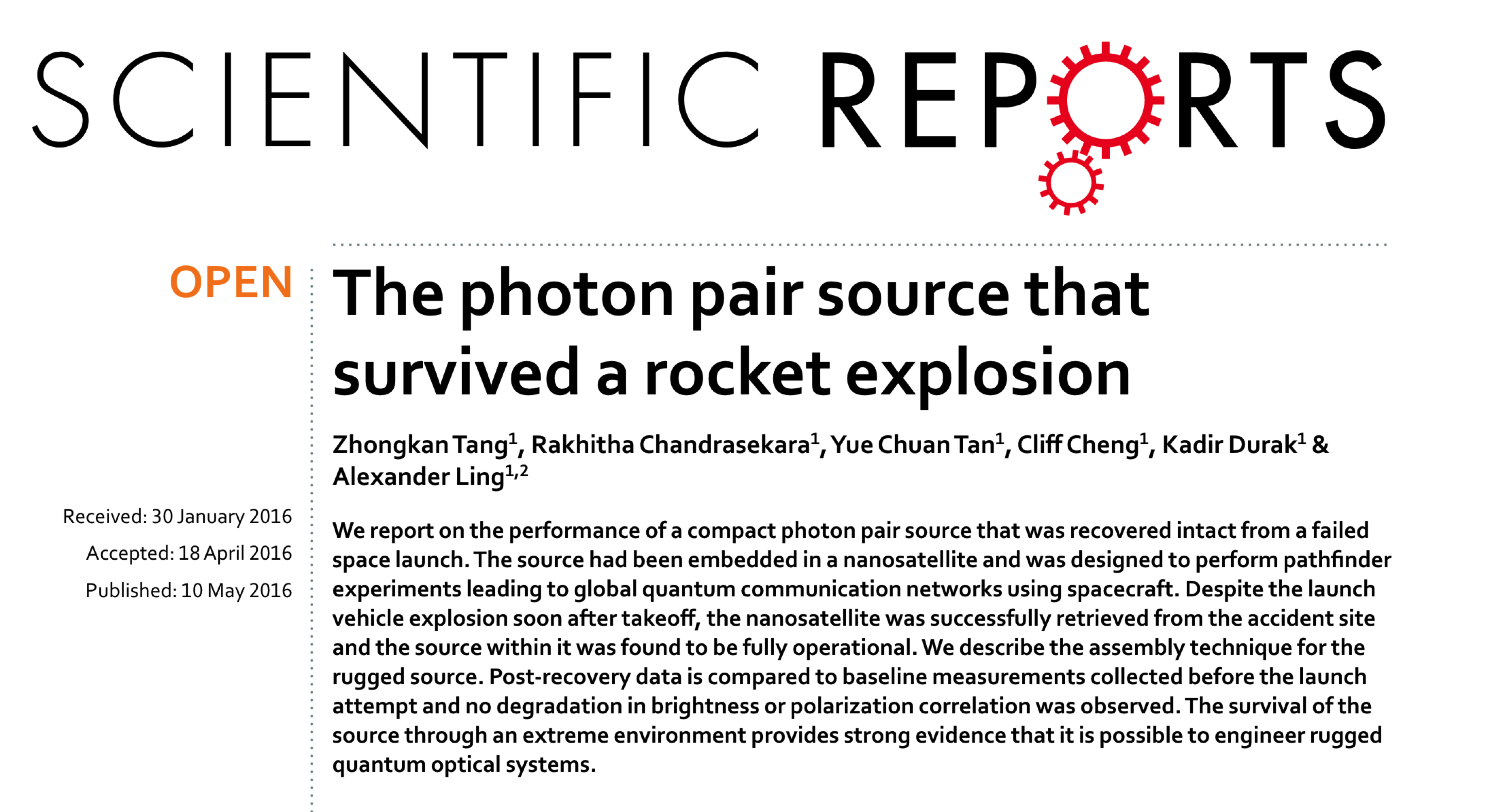
(Source: Video of accident on Wikipedia, @ 56 seconds).
by Amara Graps
It began as a normal rocket launch from the Spaceport at the Wallops Flight Facility in Wallops Island, Virginia, USA. Orb-3 was an attempt to fly Cygnus, an uncrewed cargo spacecraft, built by Orbital Sciences, carrying a 2,215 kg payload, to travel to the International Space Station (ISS). This would have been the fifth Antares launch vehicle voyage and its fourth trip to the ISS.
Included in the payload was the 2U GomX2 CubeSat from the Centre for Quantum Technologies (CQT) at the National University of Singapore and SpeQtral to demonstrate that entangled photon pairs can be produced in highly miniaturized, space-ruggedized packages.
Fifteen seconds after liftoff, on October 28, 2014, a failure of propulsion occurred in the first stage (Wikipedia). Just prior to the Antares rocket impacting the ground, the Spaceport range safety personnel issued a destruct command, causing a shock wave and fireball. The resulting explosion was felt in Pocomoke City, Maryland, 32 km away, where an explosion witness said that “It looked like an atomic bomb”. The fire at the site was quickly contained and allowed to burn itself out overnight.
However, this was a QKD experiment that wanted to fly. Like the children’s story of the Little Engine That Could, the 2U GomX2 CubeSat was flung away from the explosion and found undamaged on a neighboring beach. After it was found, the Singapore team switched it on, and the Small Photon Entangling Quantum System (SPEQS) experiment began. It was discovered to be in operational condition with just a minor drop in performance (see Figure 4 of Beddington et al., 2015).
In testament to the GomX2 Team’s propensity for understatement and experiment resiliency, the CQT’s web site reported the accident:

and another variant of a SPEQS device was supplied and integrated onto the NUS Galassia 2U CubeSat, planned for launch approximately one year later, on 16 Dec 2015. Soon after, the CQT and SpeQtral Team submitted a paper to Nature’s Scientific Reports:

where the Team analyzed the explosion conditions, including the temperature and pressure upper bounds for the operation of their entangled photon-pair source that kept their QKD experiment intact. Their conclusions were as memorable as their title:
“The recovery of the nanosatellite provided a unique opportunity to study how the photon pair source performed after undergoing a very dramatic event. […] This data strongly suggests that quantum devices that are usually thought as sensitive instruments confined only to laboratory environments can actually be engineered to withstand very catastrophic environmental conditions.”
About this time, the NASA Independent Review Team Orb-3 Accident Investigation Report missed the Little QKD Satellite That Could. They wrote about the total destruction of the Orb-3 Cygnus payload:
“Specifically, there was an explosion in the E15 Liquid Oxygen (LO2) turbopump, which then damaged the AJ26 rocket engine designated E16 installed in the Main Engine 2 position. The explosion caused the engines to lose thrust, and the launch vehicle fell back to Earth and impacted the ground, resulting in total destruction of the vehicle and its cargo.”
As described in Lu et al., 2022 (Section X), the Singapore team were successful in their second spaceflight attempt. The basis for their future space-based quantum experiment mission was established when the entangled photon-pair source was launched aboard the Galassia CubeSat (PSLV C29) to an orbit of roughly 550 km.
We all hear about how the first quantum satellite was the Chinese Micius-1 mission, launched on August 15, 2016. As we now see, the first successful QKD satellite experiment was either October 28, 2014, when GomX2 rode an explosive shock wave to a nearby beach, or on December 16 Dec 2015, when its sister arrived at 550 km.
QKD Devices are amongst the Mature in the Quantum Value Chain
Despite this event occurring a decade ago, the story is only one in the large quantum value chain. It also demonstrates one of the most mature components. See the next Figure.

(*) GQI offers six presentation slide-decks for customers which describe the State of Play in various sectors: Quantum Technology Introduction, Quantum Hardware, Quantum Safe, Quantum Sensing, Imaging, and Times, Quantum Software, and Quantum Landscape. If you are interested to learn more, please don’t hesitate to contact [email protected].
October 25, 2024

